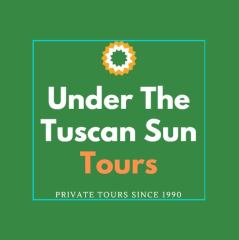Quick Details
Private Tour
From
€ 440
Enjoy a Wine Tour in Tuscany
Siena: Siena’s origins are surrounded by myth: the story goes that the city was founded by Senius, the son of Romulus. Historical statements attribute the first human settlement in this area to the Etruscans, who gave the name Sena to the settlement. After it was conquered by the Roman Empire, the place took on the name of Saena Julia.
In the Middle Ages, Siena became an extremely important town, due to its intense demographic growth and the urban expansion of the town. Economic development brought wealth and bitter conflicts. The worst was the one between the Papal supporters (Guelphs) and the Empire supporters (the Ghibellines) After facing a series of internal struggles, Siena which sided with the Ghibellines fought against nearby Florence, which declared itself a supporter of the Guelphs.
-
The tension grew worse and in 1260 a true war began that culminated in the Battle of Montaperti. The Siena Ghibellines were then defeated in the famous Battle of Colle Val d’Elsa and were sent away from the city, which fell to Guelph rule. The Guelphs ruled the city for a long time. Siena enjoyed its period of maximum splendour starting from 1200, largely due to the “Good Government” of Nine: this was the form of government that lasted longest in Siena and which allowed the city to flourish both economically and artistically. In 1348 the city was hit by the plague and suffered greatly, also economically and politically: there was a series of governments one after the other, which created instability and which forced Siena to join the Grand Duchy of Tuscany, thereby losing its independence.
The people of the city soon rebelled against the rule by Gian Galeazzo Visconti and managed to make him leave the city in 1402. For the next century, Siena was ruled by the Medici and then by the Lorena families: from the 16th century, the city went through a very prosperous period, both artistically, culturally and economically.
1656 was the year when the traditional Palio Race was started. From that moment it has been organized every year in the city, attracting tourists from all over the world.
Between the end of the 18th century and the beginning of the 19th century, Siena fell under the rule of Napoleon, just like other cities in this region. Napoleon proclaimed Florence as the capital of the new Kingdom of Etruria. The Austrians arrived after Napoleon, who ruled until 1859. They were then defeated by the Franco-Piedmont army. In 1860, the temporary government of the newly liberated Florence joined forces with the Kingdom of Sardinia and then, the year after, with the Kingdom of Italy. -
Next is the town of San Gimignano, also known for its beautifully preserved medieval towers . 14 left out of 72 initially built in the 13th century.
We will walk you to the square of the well, the centre of the town for you to enjoy All the fine shops which also sell the local smooth, dry white wine called Vernaccia, and most of all the best ice cream in the world.
-
Until the XI century Monteriggioni was a station of standstill on the Francigena Road in Tuscany. Siena transformed Monteriggioni in the imposing Fortress to protection of the boundary north in the wars against the anemy Florence.
Inside Monteriggioni there were in XIV century beyond 150 families with about 600 inhabitant.The wall was arised since 1213 (see the headstone on the Romea Gate) until 1219 and then they strengthen in varied years (1260, 1279) until the 1545. The wall up of Monteriggioni are long beyond 500 meters, tall twenty meters and surrounded from 14 towers to square base. The Fortress in the beyond two hundred years “of use” spent of hand between Florence and Siena.
Lunch. Early p.m. is our visit to one of the largest wine producers in Chianti to enjoy one of Italy’s Favourite sports: wine tasting.
